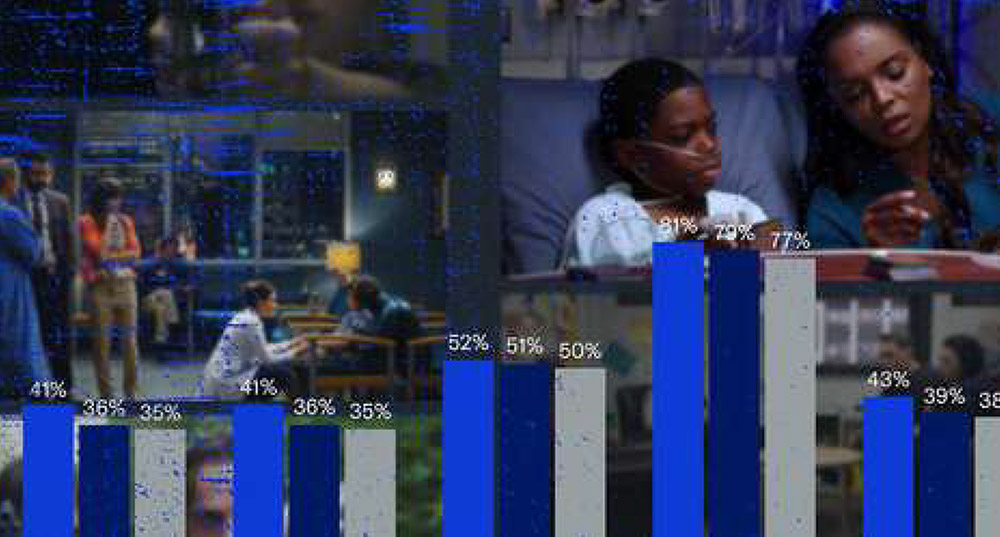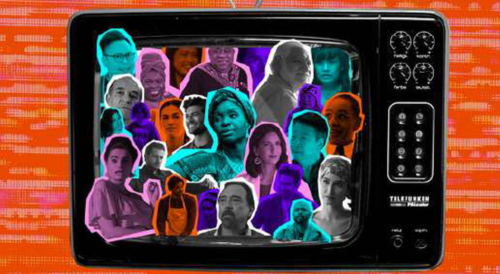FOCUS
#20
Analyzing the influence of images : The Media Impact Project toolkit
With Erica Rosenthal, PhD in social psychology, research director of the Media Impact Project at the University of Southern California (USC) since 2019. Erica Rosenthal works on various topics: health equity, gender and sexual violence, immigration…
In short: Measuring the reception of audiovisual content by its audience is increasingly popular, particularly for studying consumption habits and analyzing changes in behavior or taking action… Progress in this field, enabled by the development of algorithms and machine learning, is however faced with the current limits of these technologies.
The Media Impact Project (MIP) at the University of Southern California is one of the most advanced audiovisual content impact measurement programs in the world. The project, developed within the Norman Lear Center founded in 2000, became an autonomous research department in 2013. Its research follows two main axes: audience analysis (upstream and downstream of consumption) and analysis of the content itself.
AUDIENCE ANALYSIS: UPSTREAM HABITS AND DOWNSTREAM REACTIONS
The audience research conducted by the MIP often responds to needs expressed by associations or foundations from civil society.

Civil Society Partners who have carried out studies in partnership with the MIP
Beforehand, these partners seek to know the content consumption habits of people who are committed to their cause, in order to be able to push them into action. They study what type of content these targets prefer, as well as their motivations for viewing it (pleasure, learning…). The results allow to adapt the genre and the form of the content in order to reach the largest possible audience and to address them as closely as possible to their concerns.
Downstream, the aim is to determine whether the audience has changed its behavior in a period between two weeks and six months after viewing. Online surveys are conducted to find out if the consumption of the images has led the targets to carry out Internet searches related to the theme, if related discussions have taken place with friends and family, if related elements have been shared on social networks, or even if there have been changes in daily habits.
The MIP has published studies on the screen representation of gun safety, climate change, immigrants, domestic workers, Alzheimer’s disease…
To set up these studies, based on samples of the population that may or may not have viewed a certain type of content, the MIP research team has applied a specific statistical methodology.
A VARIETY OF STATISTICAL METHODS
There are several methods for studying the reception of content by its audience. In the case of a series or film that has not yet been broadcast, the survey is addressed to a wide range of individuals likely to see the content in question: for example, people who have seen the first season of a series are targeted when the second season is to be investigated. The same group will then be solicited twice: before the release of the second season, and then after its viewing.
When analyzing content that has already been broadcast, the survey is conducted directly with people who have seen the film or series. Their responses are compared to those of a carefully selected control group of people. The MIP research team has developed a statistical method that identifies variables associated with whether or not a certain type of content is viewed. The result is a control group with the same socio-demographic characteristics as the test group and so an equal probability of having viewed the content, the difference being that this control group has not seen it.
Whether the survey is conducted on a single group or with a control group, 250 to 300 testimonies are required to obtain reliable results.
The method based on collecting the impressions of people who are asked to watch a content, but who would not necessarily have watched it otherwise, is avoided as much as possible because it is considered to be too artificial. However, it is used in some cases, especially when studying content that was broadcast more than one year ago: those who want to see this content have already seen it, and a study with a control group is not possible because too much time has passed for the behavioral information collected to be reliable.

Gun safety on TV visual of the MIP study on gun safety
CONTENT ANALYSIS : INCREASINGLY SOPHISTICATED COMPUTER PROGRAMS…
In addition to audience analysis work, MIP studies the content produced and how it covers specific themes. In particular, MIP conducted a study that highlighted the very low proportion of direct and indirect mentions of climate change in episodes of series and films shot in the United States between 2020 and 2022: only 2.8% of the 37,000 scenarios analyzed mentioned climate change or natural phenomena that could be linked to climate change.
To conduct large-scale studies such as this one, the research team developed a list of keywords, whose relevance was first tested on a sample of scenarios before the study was launched on a large scale. However, this type of research does not provide an analysis of sentiments, nor of the way the theme appears: for example, the research team does not know if the occurrences of the climate change topic are part of a significant narrative axis, or if it is an anecdotal mention; the computer cannot discern a passage that expresses dismay caused by climate change from a passage that criticizes or denies it; last, it does not allow to collect information about the characters who mention it, especially about their credibility, while they are often mad scientists, characters presented as boring or eco- terrorists…
However the analysis of the results is of significant help to researchers in identifying characters or episodes that deserve further study by humans.
A Glaring absence climate change visual of the MIP study on climate change
… THAT STILL REQUIRE AN IMPORTANT HUMAN INTERVENTION
Human intervention is required at several stages, such as determining keywords and testing them in advance of a study, but also searching and downloading raw data, such as subtitle files. Finally, most content data analysis is supplemented with human-coded data.

Immigrant Stories matter – MIP study
This process was used in the MIP study on the representation of immigrants in audiovisual content.
In this context, individuals watched a very large number of films and episodes of series, and took notes on the socio-professional information available on the characters: their country of origin, their gender, their level of education, but also their possible association with a crime. This revealed that between 2020 and 2022, on American television, 40% of immigrants were associated with crime.
“While technology allows us to process large amounts of data and greatly improve samples, the intervention of research teams remains ever more important.”
Audiovisual content analysis still combines human and computer-gathered data. If technology allows to process a large amount of data and to strongly improve the samples, the intervention of research teams remains ever more important.
The Observatory of Images, created in 2021, is the first French associative body gathering those who are interested in the influence of images in cinema, television, video games and advertisements, especially on the Internet. Convinced that images can freeze representations and lock them into stereotypes, or on the contrary allow emancipation and open up the field of possibilities, the partners of the Observatory have come together to reflect and act together, whether their members work in production, distribution, financing, communication, research, institutions…
The objectives of the coalition are: to raise awareness among public authorities, professionals and the public; to develop research on the reception of images and to highlight existing work; to aggregate and support professional practices; to promote projects and teams concerned with combating clichés.
Join us: observatoiredesimages.org


